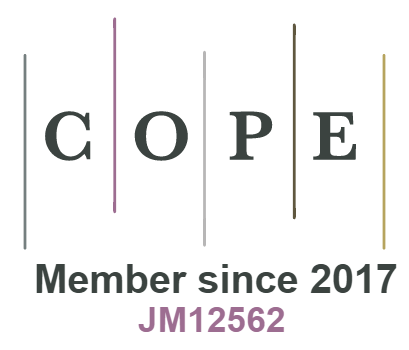Tannery Wastewater Treatment Using Low Cost Coagulants with Simple Coagulation-Filtration Process
DOI:
https://doi.org/10.18034/ei.v5i2.180Keywords:
Tannery wastewater, Suspended solids, Alum, Ferric chloride, Coagulants, COD, BODAbstract
Tannery is the oldest industries in the world. It is characterized as pollutants generating industries, which produce wide varieties of high strength toxic residues. This study has been focused on the removal of physicochemical parameters of tannery wastewater through simple coagulation-filtration techniques using low cost coagulants. Standard methods were used for sampling and analysis. Removal efficiency was measured in terms of reduction of COD, BOD5, suspended solids (SS), total dissolved solids (TDS), conductivity and color. Several doses of coagulants e.g. alum, ferric chloride and their combination were used in treatment process. Maximum removal efficiency was obtained with the combination of alum and ferric chloride dosing at 75 mg/L in terms of color, BOD5, COD, TDS, SS and conductivity corresponding to 75%, 78%, 76%, 37%, 94% and 41% respectively and that were increased to92%, 82%, 80%, 48%, 98% and 51% respectively after sand-stone filtration. Ferric chloride and combination of alum and ferric chloride are recommended for the effective primary treatment of tannery wastewater. The filtration with multi-layer sand-stone filter was effective in removing of color, TDS, conductivity and SS.
Downloads
References
American Public Health Association (APHA)(2012) Standard Methods for the Examination of Water and Wastewater, 22th ed., American Public Health Association, American Water Works Association, Water Environment Federation, Washington DC, USA.
Apte AD, Verma S, Tare V, Bose P(2005) Oxidation of Cr(Ш) in tannery sludge to Cr(vi): Field observations and theoretical assessment. JHazard Mater 121:215–222.
Ates E, Orhon D, Tünay O (1997) Characterization of Tannery wastewater for pretreatment-selected case studies. Water Sci. Technol. 36(2-3): 217–223.
Bangladesh INSPIRED (2013) Technical Report: Leather Sector Includes a Value Chain Analysis and Proposed Action Plans, pp. 3.
Chaudry MA, Ahmad S, Malik MT (1998) Supported liquid membrane technique applicability for removal of chromium from tannery wastes. Waste Manage 17(14): 211–218
Costa CR, Olivi P (2009) Effect of chloride concentration on the electrochemical treatment of a synthetic tannery wastewater. ElectrochimicaActa 54 (7): 2046–2052.
Dantas TLP, José HJ, Moreira RdeF P M (2003) Fenton and Photo-Fenton oxidation of tannery wastewater. ActaSci-Technol. 25(1): 91–95.
ECR (1997) Environmental conservation rule, Ministry of Environment& Forest, Government of the People’s Republic of Bangladesh.
Genovese CV, González JF (1998) Solids removal by coagulation from fisheries wastewaters. Water SA 24 (4): 371–372.
Hashem MA, Tomal MSN, Bushra SA (2016) Oxidation-coagulation-filtration processes for the reduction of sulfide from the hair burning liming wastewater in tannery, Journal of Cleaner Production, 127, 339-342
Haydar S, Aziz JA (2009) Coagulation–flocculation studies of tannery wastewater using combination of alum with cationic and anionic polymers. J Hazard Mater 168(2-3): 1035–1040.
Imran Q, Hanif MA, Riaz MS, Noureen S, Ansari TM, Bhatti HN (2012) Coagulation/Flocculation of Tannery Wastewater Using Immobilized Chemical Coagulants. J Appl Res Technol 10(2):79–86.
Islam KMN, Misbahuzzaman K,Majumder AK, Chakrabarty M (2011) Efficiency of different coagulants combination for the treatment of tannery effluents: a case study of Bangladesh. African J Environ SciTechnol 5(6): 409–419.
Juel MAI, Syed SA, Dey TK (2017) Assessment of Kinetic Coefficients for Chrome Tannery Wastewater Treatment by Activated Sludge System, Iranica Journal of Energy and Environment 8(1): 56-60.
Kim S-H, Moon B-H, Leeb H-I (2001) Effects of pH and dosage on pollutant removal and floc structure during coagulation. Microchem J 68 (2–3):197–203.
Kornhauser C, Wróbel K, Wróbel K, Malacara JM, Nava LE, Gómez L, González R (2002) Possible adverse effects of chromium in occupational exposure of tannery workers. Industrial Health 40: 207–213.
Krishanamoorthi S, Sivakumar V, Saravanan K, Prabhu TVS (2009) Treatment and Reuse of Tannery Waste Water by Embedded System. Modern ApplSci 3(1): 129–134.
Leghouichi E, Laib E, Guerbet M (2009) Evaluation of chromium contamination in water, sediment and vegetation caused by the tannery of Jijel (Algeria): A case study. Environ Monit Assess 153: 111–117.
Owlad M, Aroua MK, Daud WAA, Baroutian S (2009) Removal of Hexavalent Chromium-Contaminated Water and Wastewater: A Review. Water Air Soil Pollut 200:59–77.
Peavy HS, Rowe DR, Tchobanoglous G (1985) Environmental Engineering, McGraw-Hill International, International edition 1985, Singapore.
Sabur MA, Rahman MM, Safiullah S (2013) Treatment of tannery effluent by locally available commercial grade lime. J Sci Res 5 (1):143–150.
Sepehr MN, Nasseri S, Assadi MM, Yaghmaian K (2005) Chromium Bioremoval from tannery industries effluent by AspergillusOryzae Iran. J Environ Health SciEng 2(4): 273–279.
Shegani G (2014) Treatment of Tannery Effluents by the Process of Coagulation. Int J Environ Chem Eco GeolGeophyEng 8 (4):240–244.
Song Z, Williams CJ, Edyvean RGJ (2003) Tannery Wastewater Treatment Using an Up flow Anaerobic Fixed Biofilm Reactor (UAFBR). Environ EngSci 20(6):587–599.
Song Z, Williams CJ, Edyvean RGJ (2004) Treatment of tannery wastewater by chemical coagulation. Desalination 164: 249–259.
Tariq SR, Shah MH, Shaheen N, Khalique A, Manzoor S, Jaffar M (2005) Multivariate analysis of selected metals in tannery effluents and related soil. J Hazard Mater 122:17–22.
Van Groenestijn JW, Langerwerf JSA, Lucas M (2002) Reducing environmental emissions in tanneries. J Environ Sci Health A, 37(4): 737–743.
Verma AK, Bhunia P, Dash RR (2012) Supremacy of Magnesium Chloride for decolourisation of textile wastewater: A comparative study on the use of different coagulants.IntJ Environ Sci Develop 3(2): 118–123.
--0--
Published
Issue
Section
License
Engineering International is an Open Access journal. Authors who publish with this journal agree to the following terms:
- Authors retain copyright and grant the journal the right of first publication with the work simultaneously licensed under a CC BY-NC 4.0 International License that allows others to share the work with an acknowledgment of the work's authorship and initial publication in this journal.
- Authors are able to enter into separate, additional contractual arrangements for the non-exclusive distribution of the journal's published version of their work (e.g., post it to an institutional repository or publish it in a book), with an acknowledgment of its initial publication in this journal. We require authors to inform us of any instances of re-publication.









